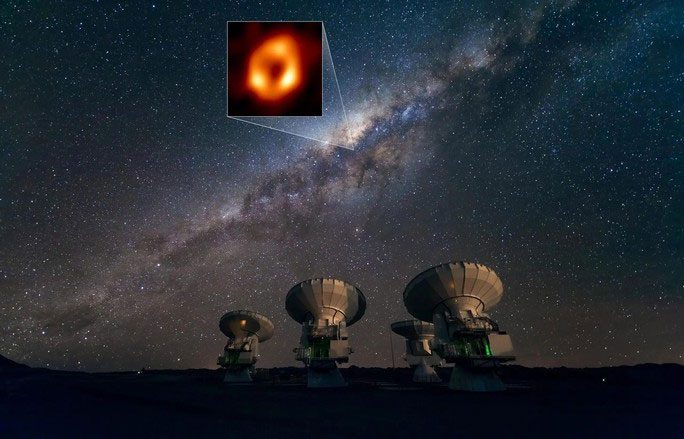Data from the Gaia satellite has shocked scientists by revealing the types of “monsters” humanity has been searching for with powerful telescopes are actually abundant in places we can easily observe in the night sky.
Right in the “heart” of the Milky Way galaxy, 1,300 stars born from the dawn of the universe have just been revealed in data from the European Space Agency’s (ESA) Gaia satellite.
Some of these stars even appeared less than 1 billion years after the Big Bang, meaning they are nearly 13 billion years old today.

The center of the Milky Way – the “Milky Way” we often see in the sky – from Earth’s perspective, with the supermassive black hole marked in the center – (Photo: SCITECH DAILY).
This shocking discovery comes from a study led by astronomer Anke Arentsen from the University of Cambridge (UK), recently presented at the National Astronomy Meeting in the UK. They based their findings on the metal-poor nature of the primordial stars, according to Science Alert.
As many studies have shown, the early universe was very monotonous in terms of chemistry, consisting almost entirely of hydrogen and helium. However, these stars, formed from such simple elements, created heavier elements through nuclear fusion.
At the end of their life cycles, they died and enriched the universe with new heavier elements. Over billions of years, countless generations of stars have made the universe as chemically rich as it is today.
The researchers looked directly into the center of the Milky Way and found 8,000 candidates for metal-poor stars, eventually filtering it down to 1,300 stars identified as remnants from the “dawn of the universe.”
This discovery promises to open new horizons for research aimed at understanding how the universe began.
Finding such ancient objects in proximity is an unparalleled treasure, as scientists have mostly relied on telescopes to study the past through objects billions of light-years away.
The basic principle of these images is that we see them at the moment the light started traveling from them to our eyes; thus, images from billions of light-years away are also images from billions of years ago, with slight inaccuracies due to influences from objects along the way. Therefore, studying distant parts of the universe also means studying the universe’s past.
With the recently discovered ancient stars, they likely formed in some ancient galaxy before a series of catastrophic mergers that created the colossal Milky Way we know today. Scientists are mapping their orbits to learn more about this.


















































